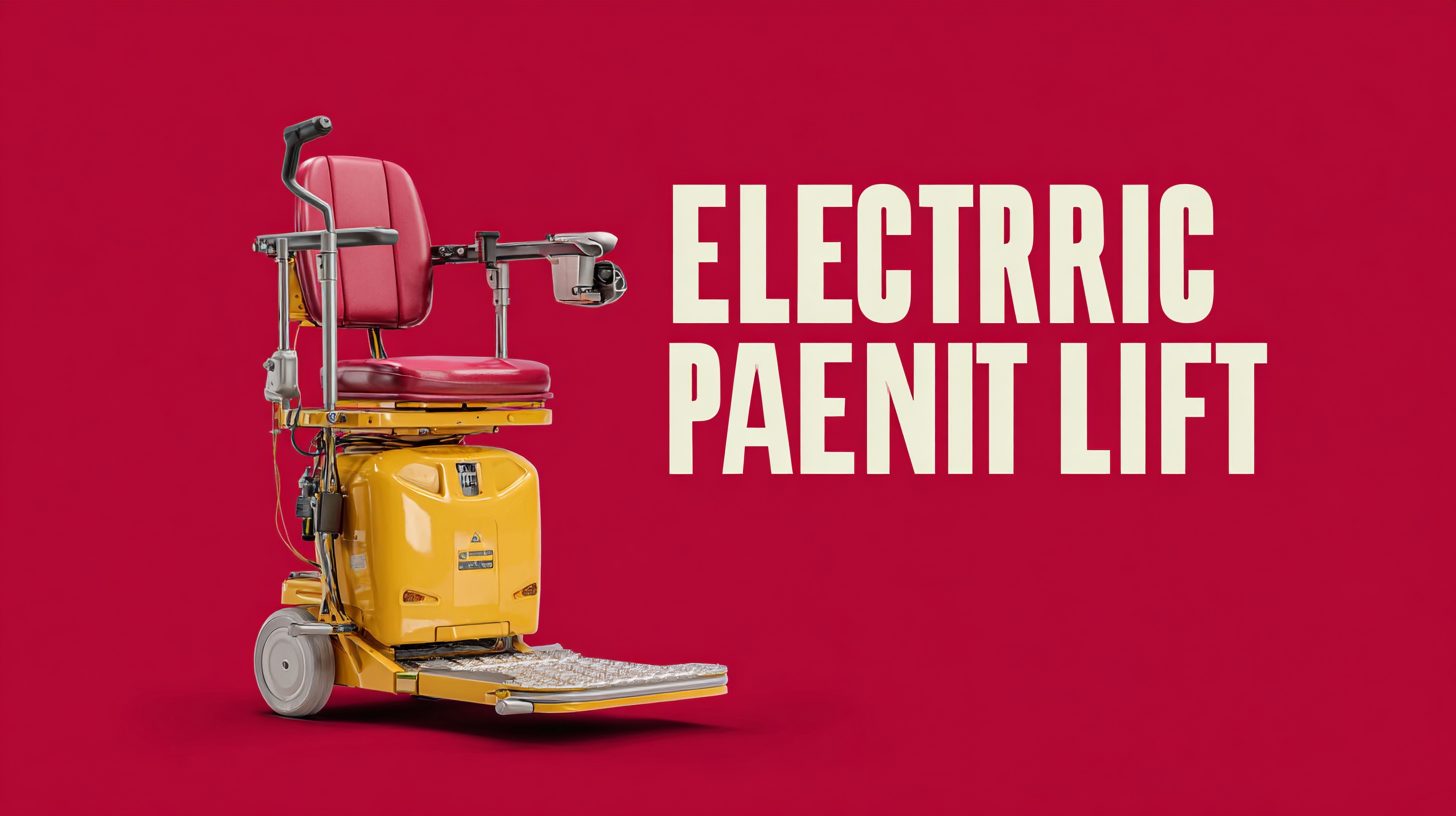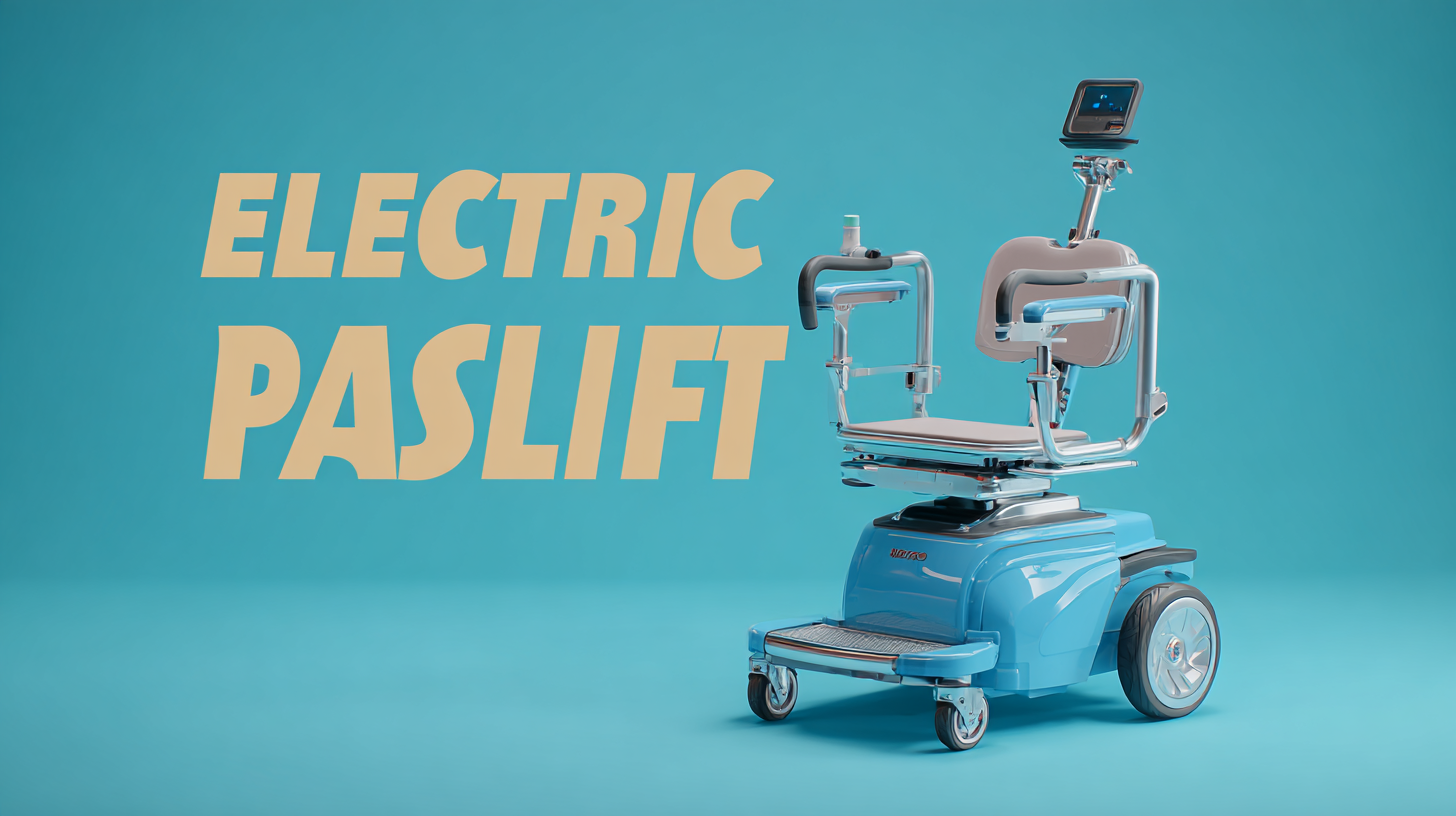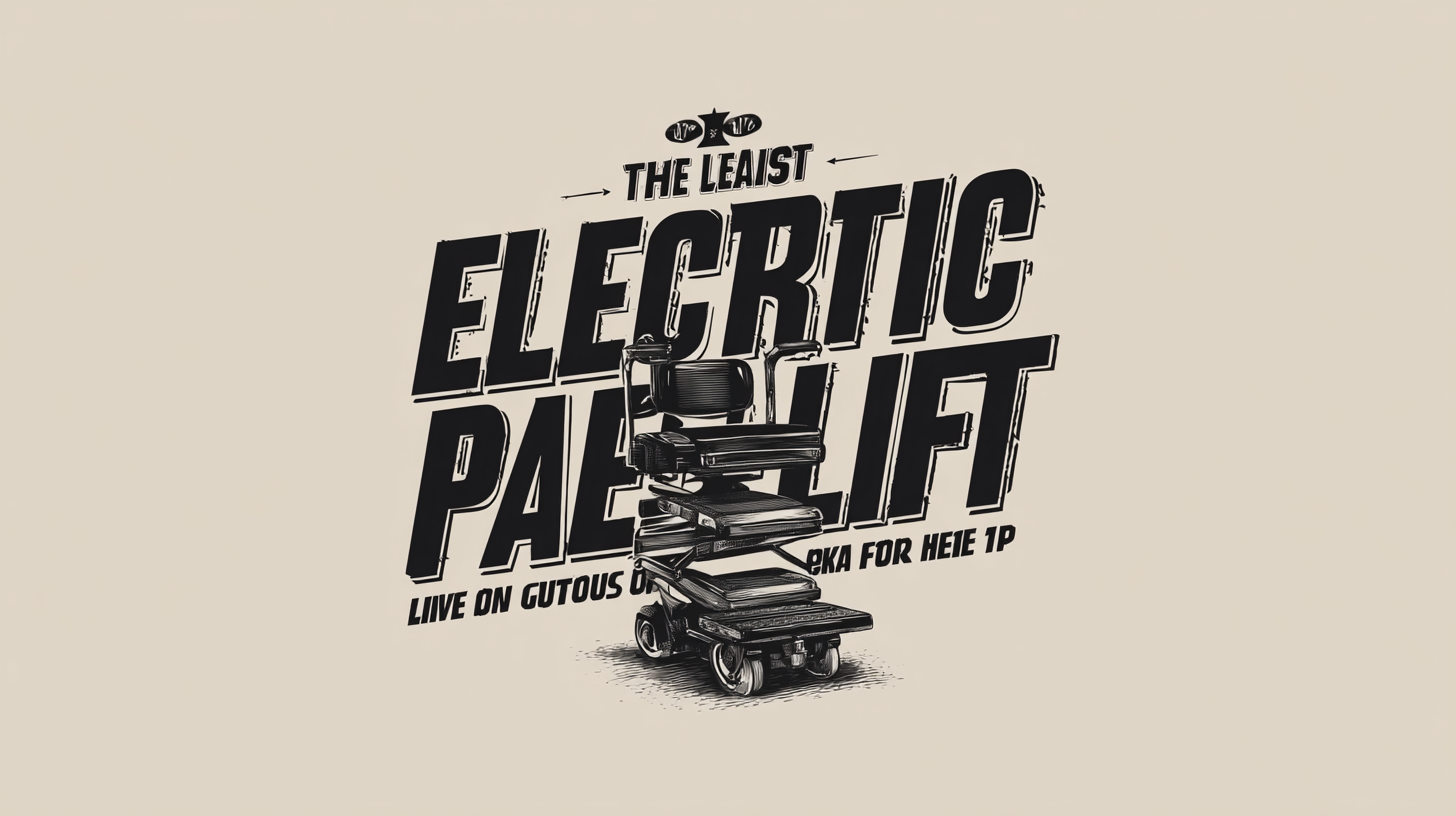The Ultimate Guide to Choosing the Best Electric Patient Lift for Your Needs
As the global health care sector continues to evolve, the demand for innovative solutions in patient mobility is on the rise, particularly for Electric Patient Lifts. According to a recent report by the World Health Organization, the number of elderly individuals aged 65 and above is projected to reach 1.5 billion by 2050, a significant increase that necessitates efficient and safe patient handling solutions. Electric Patient Lifts have become essential tools for caregivers, reducing the risk of injury and enhancing the quality of life for both patients and providers. Furthermore, industry standards and import-export certifications are crucial for ensuring the safety and effectiveness of these devices, guiding purchasers in making informed decisions. This guide aims to navigate the complexities of selecting the best Electric Patient Lift tailored to individual needs, backed by industry insights and comprehensive analysis.

Understanding Different Types of Electric Patient Lifts for Varied Needs
When it comes to selecting the best electric patient lift, understanding the different types available is crucial to ensuring the lift meets specific needs.
There are primarily three types of electric patient lifts: sit-to-stand lifts, full-body slings, and ambulation lifts.
According to the Occupational Safety and Health Administration (OSHA), over 50% of healthcare workers experience injuries related to manual lifting, highlighting the importance of choosing the right lift to
enhance both patient safety and caregiver ergonomics.
 Sit-to-stand lifts are designed to assist patients who have some upper body strength, allowing them to transition from sitting to a standing position efficiently.
These lifts are particularly beneficial for rehabilitation settings, where mobility improvement is a goal.
On the other hand, full-body slings are intended for patients who require a more supportive lift, particularly those who require complete assistance.
Research from the National Institute for Occupational Safety and Health (NIOSH) indicates that electric lifts not only reduce the load on healthcare providers but also minimize patient falls and injuries.
Lastly, ambulation lifts focus on providing support for patients to regain the ability to walk, making them ideal for therapy and recovery environments.
Each type of lift serves a unique purpose tailored to varying patient needs, ensuring safety and comfort during transfers.
Sit-to-stand lifts are designed to assist patients who have some upper body strength, allowing them to transition from sitting to a standing position efficiently.
These lifts are particularly beneficial for rehabilitation settings, where mobility improvement is a goal.
On the other hand, full-body slings are intended for patients who require a more supportive lift, particularly those who require complete assistance.
Research from the National Institute for Occupational Safety and Health (NIOSH) indicates that electric lifts not only reduce the load on healthcare providers but also minimize patient falls and injuries.
Lastly, ambulation lifts focus on providing support for patients to regain the ability to walk, making them ideal for therapy and recovery environments.
Each type of lift serves a unique purpose tailored to varying patient needs, ensuring safety and comfort during transfers.
Key Features to Consider When Selecting an Electric Patient Lift
When selecting an electric patient lift, it is essential to consider several key features that can significantly impact usability and safety. First and foremost, the lift's weight capacity is crucial; it should accommodate the maximum weight of the patient to ensure secure lifts without strain. Look for lifts with a capacity that exceeds your needs to account for additional weight from any accessories or clothing. Moreover, a sturdy frame and high-quality materials will enhance durability and reliability, providing peace of mind for caregivers and patients alike.
Another important feature is the lift's maneuverability. Patient lifts come with various wheel designs and sizes that influence their ease of movement. Opt for a model with locking wheels and a rotating pivot base, which can facilitate smooth transitions and stability during transfers. Additionally, consider the height range of the lift; a versatile range will allow for easier transfers between different surfaces, such as beds and wheelchairs. Lastly, consult the lift's battery life and charging time, as efficient power management will ensure uninterrupted assistance when needed most.
Assessing Weight Capacity and Size for Optimal Patient Safety
When selecting an electric patient lift, assessing weight capacity and size is crucial for ensuring optimal patient safety and comfort. A lift's weight capacity determines the maximum load it can handle, which directly impacts its effectiveness and the safety of both the patient and caregiver. It is essential to choose a lift that exceeds the patient's weight to avoid overloading the device and to account for any additional items, such as slings or clothing, that may add to the total weight.

Size is another critical factor to consider, as it influences the stability and maneuverability of the lift. A lift that is too small may struggle to accommodate patients with wider frames, while one that is too large could be cumbersome in tight spaces. It's vital to evaluate the dimensions of both the patient and the lift's base to ensure that it can navigate through doorways and around furniture without difficulty. Ultimately, prioritizing weight capacity and size will lead to a safer and more efficient lifting experience, enhancing the overall care of patients who require assistance.
Evaluating Ease of Use and Comfort in Electric Patient Lifts
When selecting the best electric patient lift, evaluating ease of use and comfort should be your top priorities. A lift that is difficult to operate can lead to frustration for both caregivers and patients. Look for models that offer intuitive controls, ideally with easy-to-read displays and simple buttons. This minimizes the learning curve and enhances safety during use. Additionally, consider the weight capacity and size of the lift, ensuring it meets the specific needs of the patient to promote confidence and security.
Comfort is equally important when choosing an electric patient lift. A well-padded sling and adjustable positioning features can greatly enhance patient comfort during transfers. Opt for slings that are breathable and fit the body's contours to reduce pressure points. If possible, involve the patient in the selection process to address their comfort preferences and address any mobility concerns they may have.
**Tips:**
1. Test the lift’s maneuverability in a space that resembles the intended environment, ensuring it can navigate tight corners and doorways effortlessly.
2. Regularly check for any maintenance issues to ensure the lift remains safe and functional, as a well-maintained lift provides both ease of use and peace of mind for caregivers and patients alike.
The Ultimate Guide to Choosing the Best Electric Patient Lift for Your Needs
| Lift Model | Weight Capacity (lbs) | Battery Life (hours) | Ease of Use Rating (1-5) | Comfort Features |
|---|---|---|---|---|
| Model A | 350 | 6 | 4 | Padded sling, adjustable base |
| Model B | 450 | 8 | 5 | Memory foam padding, wide transfer base |
| Model C | 600 | 10 | 3 | Lifting belt included, compact storage |
| Model D | 500 | 7 | 4 | Ergonomic handles, cushioned seating |
Comparing Costs and Long-Term Benefits of Investing in a Quality Lift
Investing in a quality electric patient lift can lead to significant long-term benefits, both financially and in terms of care quality. According to a report by the National Institute on Aging, facilities that implement advanced lifting technology can reduce the incidence of injury among caregivers by up to 50%. This not only preserves the well-being of staff but also minimizes turnover rates, which can be costly for healthcare providers. With staff injuries costing the industry an estimated $20 billion annually (Occupational Safety and Health Administration), the upfront cost of a quality lift can be offset by these reduced liabilities.
Additionally, the return on investment (ROI) extends beyond safety. A study published in the Journal of Healthcare Management revealed that facilities utilizing electric lifts achieved a 30% increase in efficiency during patient transfers, enabling staff to devote more time to direct patient care. This improvement contributes to enhanced patient satisfaction and outcomes, essential factors in today's value-based healthcare models. While the initial expenditure for high-quality lifts may seem daunting, the long-term savings and improvements to care delivery undeniably affirm their critical role in modern medical practices.
The Cost Comparison of Electric Patient Lifts
This chart compares the costs associated with different categories of electric patient lifts. Investing in a higher quality lift often results in better long-term benefits, including durability and user satisfaction.
